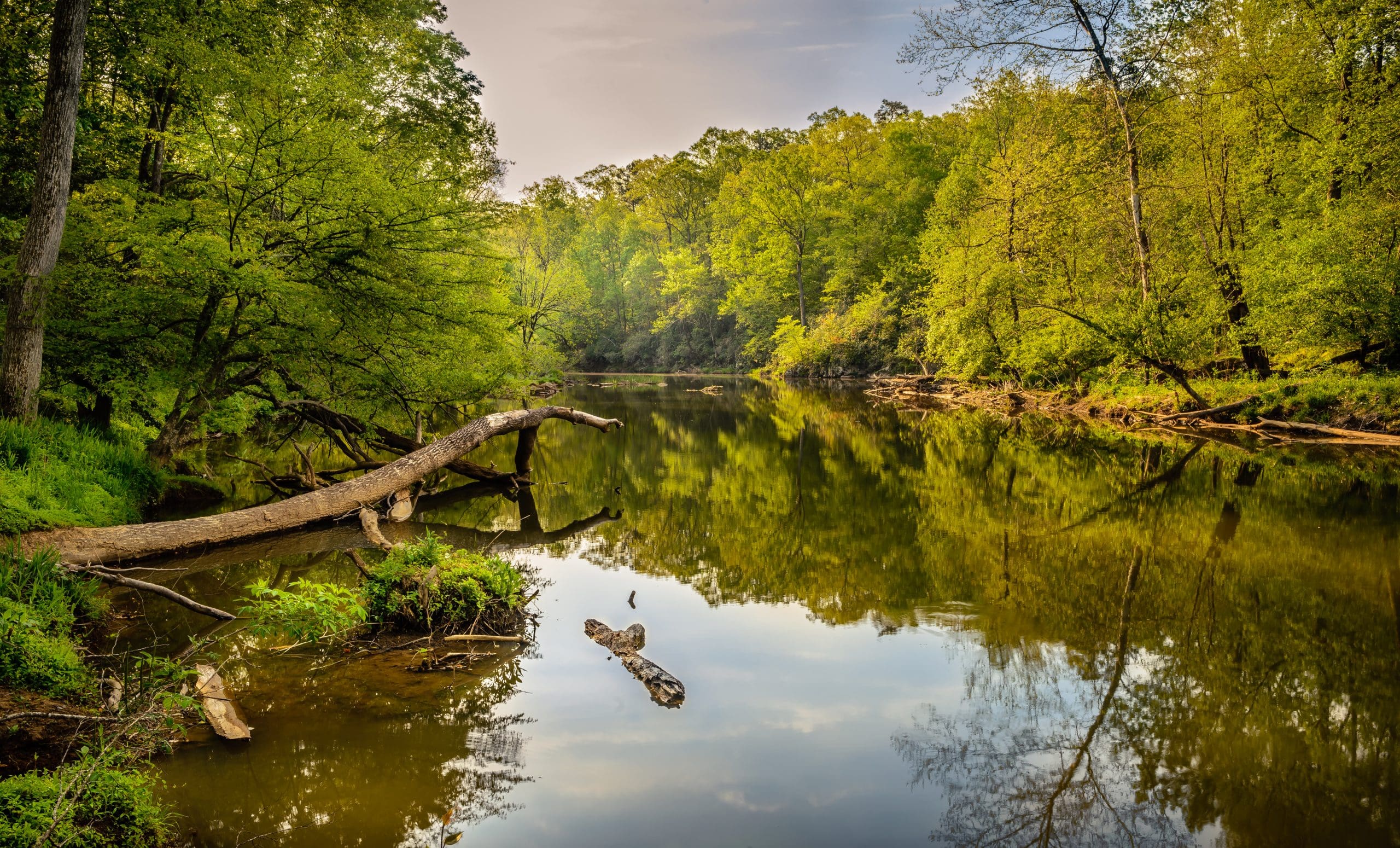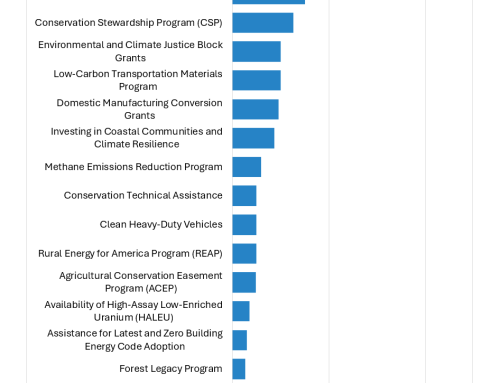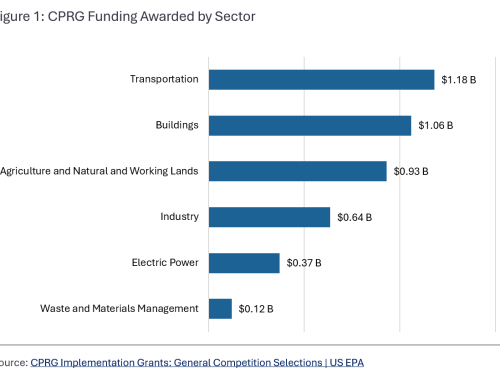
Image: Eno River, North Carolina. Source: Shutterstock.
We spoke with Julie Robinson from Robinson Consulting Group, Inc, Brian Buzby and Grady O’Brien from NC Conservation Network (NCCN) to get a sense of how they are getting ready for climate funding to come to North Carolina (NC). This interview has been edited for length and clarity.
What is your priority over the next 12 months?
Brian Buzby: There is so much coming through. It can be a bit overwhelming. You’ve got to get in as early as you can with whatever agency or division within an agency that has the ability to move the funds. So in some ways it’s more based on which funds are going the quickest and trying to get there before they even start that first tranche of funding.
Julie Robinson: Organizations in NC that have been part of the Coalition developing the Atlas Portal have a great opportunity to be a very valuable resource with state elected officials and decision makers, whether it’s the Governor’s office and his Administration’s agencies, such as the Department of Transportation or Department of Environmental Quality, or local governments. By being able to give them access to the Portal to get that valuable information, our grantees get the credit for being that resource to key people. And, the peer-to-peer sharing of resources, updates and ideas that have worked in other states via the Portal’s library is also very valuable.
Grady O’Brien: When I started work on this, my goal and priority was to be able to be responsive to what our stakeholders, either our partner groups or whoever we met in government was looking at. And early on, that really has been the formula funding stuff in North Carolina because folks know that that is coming automatically, but it’s a fire hose of money and a lot of different areas. When’s it coming? What are the state matches that are needed?
Then there’s also the work of, okay, now we can sit down and look at some of these competitive grants, these things that aren’t coming automatically that we have to maybe do some work around, which is where I’ve started to focus now. So the EV charging stuff including not just the formula funding, but the competitive funding too. I think there’s probably an opportunity to go after some of that extra money. We have settlement money that is used to buy electric school buses and that same department probably isn’t going to handle this money, but at least we know and have a best practices on it. Also, obviously at NCCN, we care a lot about water infrastructure. There’s a lot of money coming automatically for that but there will be more discretionary grant programs and there’s a few that I’m looking into where maybe our environmental department needs to go and look at this. Then resilience is another one we care a lot about. It’s called Building Resilient Infrastructure and Communities which is the refit of an old program to a more modern form of resilience. There’s a lot of opportunity across a wide array of issues at NCCN. What a lot of folks are going to have to do is say, where’s the best cost benefit for us? Where can we get the most efficient money without having to look at 125 new programs that were set up in this bill?
What are you hearing from Environmental Justice (EJ) partners?
Brian Buzby: As we’ve been doing outreach with our partners, we’re hearing people that are interested in the opportunities but are skeptical that this will be different than other times because so often these communities have been left behind. With the EJ 40 commitment, there’s at least a little bit of hope but then you quickly run into the, so how do we go about doing this? And that’s where we’re exploring.
How do you go about working with community groups? Some of them don’t have 501(c)(3) status. And then in some cases you quickly move to, how about you do outreach to your local elected officials and get your local government excited and ready to go? We did a presentation with a group that’s part of our team called the North Carolina Black Alliance. It’s a group of Black, local elected officials, and we quickly heard the same thing from them of “we have one person in our planning department and we’ve never written a grant like this”. So even if you make those two or three connections and actually get to the point where a local mayor or Council member is saying let’s do it, they then don’t have the resources.
Any key risks that you see with the IIJA funding implementation?
Julie Robinson: Being able to identify and flag competitive grants which are going to require state matching dollars is very important. Because we’ve got a Republican led General Assembly, getting them to allocate millions of dollars, tens of millions of dollars is always a big ask. But then you link it to transportation, clean energy or climate issues and it can become an even more difficult, lengthy ask, which requires a diverse coalition of partners with relationships with legislators to make that budget request and make the strong case on how this federal funding will be a major and long-lasting benefit to our state, for North Carolinians, and to legislators’ districts. We need to be able to flag all of those competitive grants in the different areas of the IIJA that might require state matching dollars as early as possible to give us time to do that lobbying and advocacy work with legislators.
Grady O’Brien: This is a lot of money dumped into transportation and it’s not always going to be the most energy and climate friendly. If we don’t do our jobs as advocates, this could lead to just a lot more surface highways. There’s a lot of opportunities, but it starts now to change the thinking even ever so slightly to start to use some of this funding on more EV charging, more carbon reduction on the electric grid, things like that.
Brian Buzby: It’ll be different for blue states and red states. For us here in a red legislative state we’re worried about all the funding. We are concerned that it could even just get tied up or a state match doesn’t get made available. We dealt with this with our Volkswagen Settlement funds. We are just years behind blue states getting that money out the door because the legislature sat on it and then got into a tussle with our Democratic governor, so for us we’re just trying to figure out what does the legislature actually have some control over. And I know the Governor’s office, the state budget office, and legislators are all asking similar questions and trying to figure out what the NC General Assembly may need to do.
What have you learned so far?
Brian Buzby: We’ve assembled a diverse team that has different access points, different connections, and when you look at some of the funding that’s coming through really quickly, in a lot of ways you have to make a quick choice. Where we are trying to build the ability for low income communities, rural communities, environmental justice, impacted communities, we want to help them get in the queue. But in some cases, for the first tranche of funding we may not be able to move quickly enough. Well-resourced urban communities are going to be able to get in the door much more quickly.
One thing that I should have known going in, but I was still surprised is that for some of these programs you go in and you sit down with the point person and they are just totally overwhelmed. Hopefully, the ability to share the Atlas tool with some of the folks in state government will be powerful because they’re always just amazed that we’re bringing resources to them. They’re dealing with a fire hose and suddenly we show up and we’re offering to help them with information. Sometimes we can say, “we’ll go do that research and get it back to you”.
The biggest thing is just getting in and start talking to the people that are trying to deal with this. They have a unique set of challenges and we need to figure out what those are and then figure out how to how to help them.
For more info, contact Brian at brian@ncconservationnetwork.org, Julie at julie@robinsonconsulting.net and Grady at obrien@ncconservationnetwork.org


